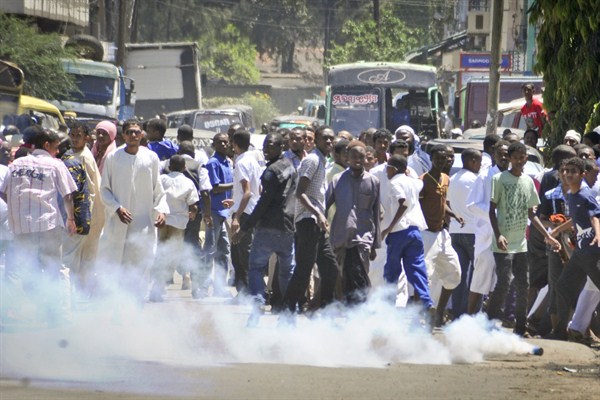Mombasa, Kenya’s second-largest city and historical center of commerce, has long been something of a paradox. As a hub of Indian Ocean trade for more than a millennium, the city of 1.2 million has a deeply cosmopolitan past that’s visible in its diversity of ethnicities, religions, fashions and architectural styles. Today, a short stroll from Fort Jesus, the imposing seaside garrison built by the Portuguese in 1596, leads into an old town shaped by Arab, Indian, British and Swahili influences. Here, the narrow, winding streets, amid houses adorned with intricately carved doors and balconies, are filled with men in ankle-length kanzus sipping cardamom and cinnamon spiced tea; women frying batches of mandazi; and boys in replica Premiere League jerseys playing pick-up football, undeterred by regular passing motorbikes. Just around the corner, the bustling Mombasa Avenue, saturated with street traders and traffic, is a testament to the city’s modern day commercial importance. As the home of Kenya’s only deep-water port, Mombasa remains a critical hub of trade and lynchpin of a Kenyan economy that has grown at an annual rate of more than 5 percent over the past decade.
Yet Mombasa, like many communities along Kenya’s 333-mile “coastal strip,” is also being left behind. Fifty-two years after independence, the coastal region trails much of the country in levels of income, education and access to health care—a situation many link to historical disparities over land and a national political system dominated by “up-country” elites in the capital, Nairobi. Despite the region’s relatively peaceful history, this sense of exclusion has heralded increasingly radical and sometimes violent politics. Over the past decade, Kenya’s former Coast province, which now consists of six individual counties, has seen the rise of active separatists, radical Islamists and a wave of insecurity linked to Kenya’s war against the al-Shabab terrorist group in neighboring Somalia.
Today, the secessionists have largely been silenced, and a network of homegrown radical clerics has been weakened. Meanwhile, a new devolved system of government has left many cautiously optimistic that the region, moving forward, will have greater control of its own future. Nonetheless, drivers of potential unrest persist, including significant economic disparities between native “coasterians” and those of up-country origin, a growing prevalence of drug addiction and a determination by al-Shabab to increasingly take its war to Kenya. Interlinked with all of this, locals say, is the region’s most pressing challenge: forging a better future for its largely disaffected, idle youth.

